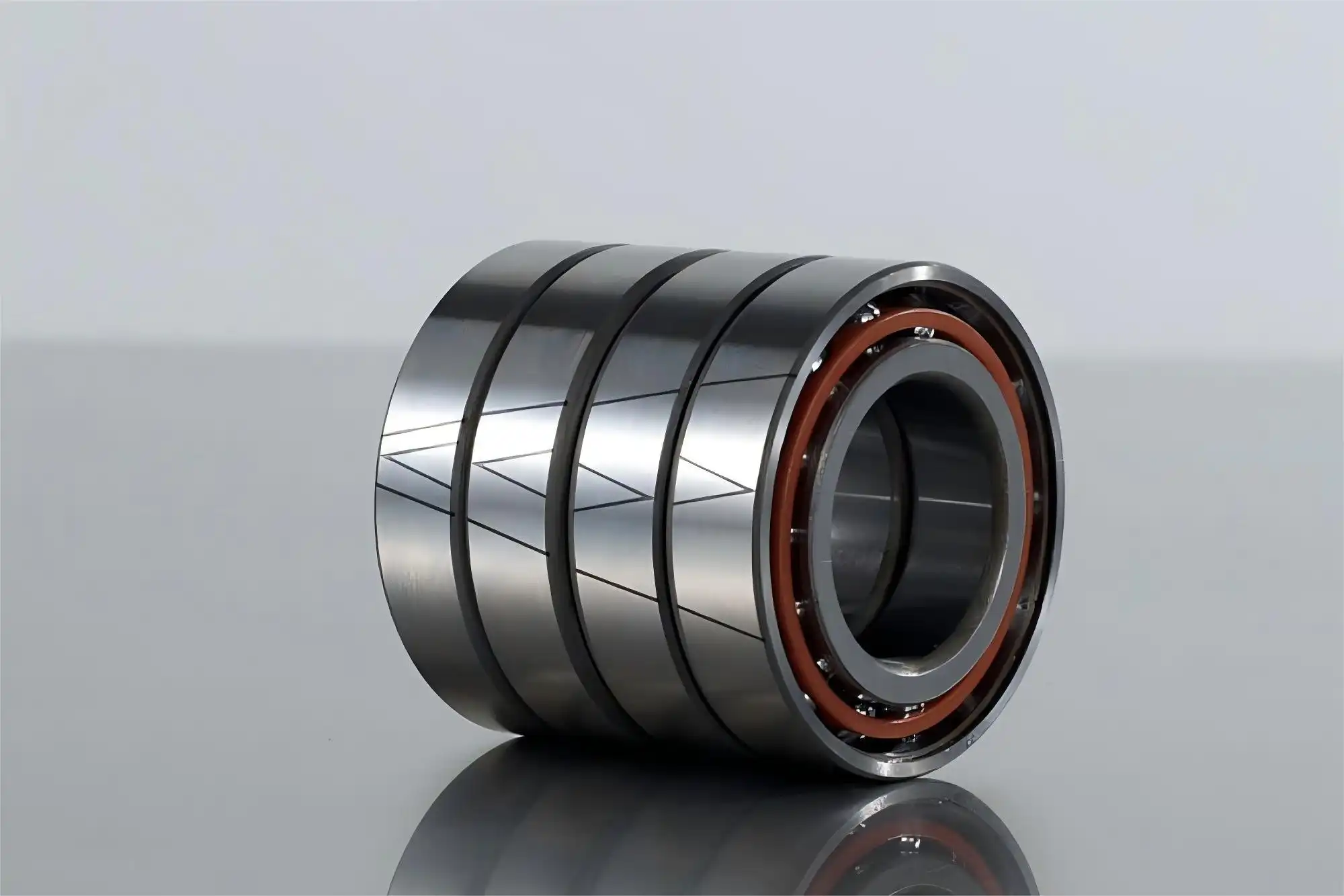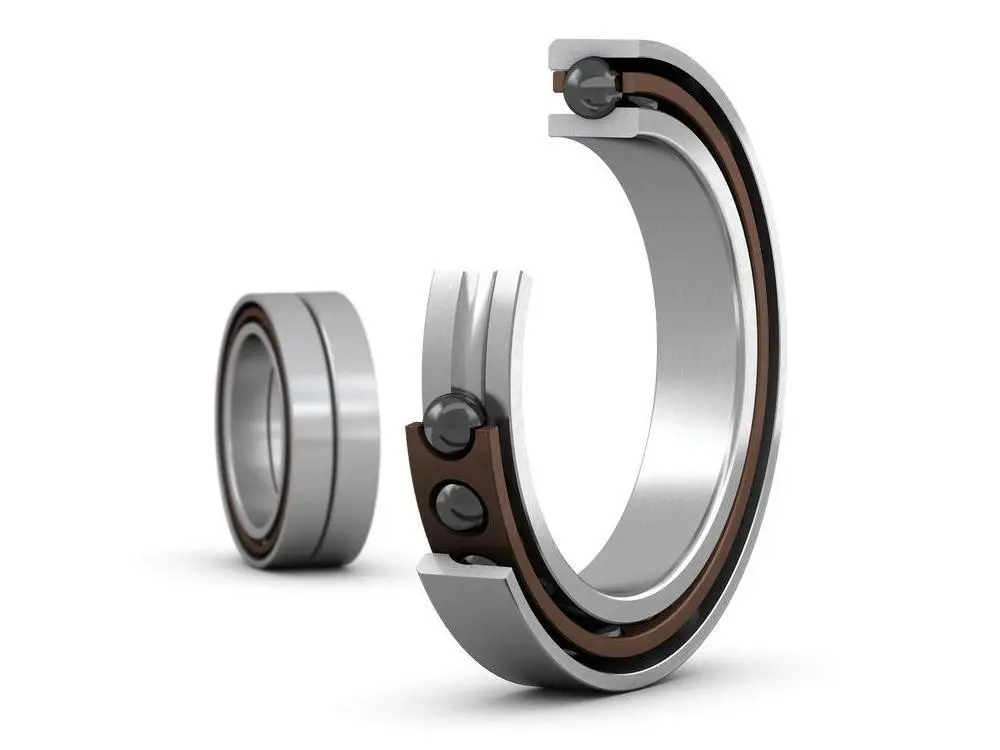Why Choose a Precision Angular Contact Ball Bearing for CNC Machines?
In the world of precision engineering and manufacturing, the choice of components can make a significant difference in the performance and longevity of machinery. When it comes to CNC (Computer Numerical Control) machines, one crucial element that often goes unnoticed but plays a vital role is the bearing system. Among the various types of bearings available, precision angular contact ball bearings have emerged as a popular choice for CNC applications. These specialized bearings offer a unique combination of high accuracy, load-carrying capacity, and ability to handle both radial and axial loads, making them ideal for the demanding requirements of CNC machines. This article delves into the reasons why precision angular contact ball bearings are increasingly becoming the go-to option for CNC machine manufacturers and operators, exploring their design features, performance benefits, and the impact they have on overall machine efficiency and output quality.

What Are the Key Advantages of Precision Angular Contact Ball Bearings in CNC Applications?
Superior Load-Bearing Capacity
Precision angular contact ball bearings excel in their ability to handle both radial and axial loads simultaneously, a crucial feature for CNC machines that often involve complex multi-directional forces. The unique design of these bearings, with their angled raceways and precision-ground balls, allows for optimal distribution of forces across the bearing surface. This results in significantly higher load-bearing capacity compared to standard ball bearings. In CNC applications, where cutting forces can be substantial and unpredictable, the robust nature of precision angular contact ball bearings ensures stable and accurate operation even under demanding conditions. The increased load capacity also contributes to extended bearing life, reducing maintenance needs and machine downtime.
Enhanced Rotational Accuracy
One of the primary requirements in CNC machining is precision, and this is where precision angular contact ball bearings truly shine. These bearings are manufactured to extremely tight tolerances, often with accuracy classes of P4 or even P2, ensuring minimal runout and exceptional rotational accuracy. The angular contact design allows for preloading of the bearing, which further reduces play and increases stiffness. This high level of accuracy translates directly to the performance of the CNC machine, enabling the production of components with tighter tolerances and superior surface finishes. For industries where micron-level precision is crucial, such as aerospace or medical device manufacturing, the use of precision angular contact ball bearings can be a game-changer.
High-Speed Capabilities
CNC machines often operate at high speeds to maximize productivity, and precision angular contact ball bearings are well-suited to meet this demand. The design of these bearings, particularly those with optimized cage designs and materials, allows for efficient lubrication and heat dissipation. This enables them to maintain stability and accuracy even at very high rotational speeds. Some advanced precision angular contact ball bearings can operate at speeds exceeding 30,000 RPM, making them ideal for high-speed machining centers. The ability to maintain precision at high speeds not only increases productivity but also contributes to better surface finishes and reduced tool wear, leading to overall improved machining quality and efficiency in CNC operations.
How Does the Design of Precision Angular Contact Ball Bearings Contribute to CNC Machine Performance?

Optimized Contact Angle
The contact angle is a critical design feature of precision angular contact ball bearings that significantly impacts their performance in CNC machines. Typically ranging from 15° to 40°, the contact angle determines the bearing's ability to handle axial loads and affects its speed capabilities. Bearings with smaller contact angles (around 15°) are ideal for high-speed applications with moderate axial loads, making them suitable for many CNC spindle applications. Larger contact angles (25° to 40°) provide greater axial load capacity at the expense of some speed, which can be beneficial in heavy-duty machining operations. The ability to choose the appropriate contact angle allows CNC machine designers to optimize the bearing configuration for specific operational requirements, balancing speed, load capacity, and precision as needed.
Precision Ball and Raceway Geometry
The exceptional performance of precision angular contact ball bearings in CNC applications is largely attributed to the meticulous design and manufacturing of their balls and raceways. These components are produced with extremely tight tolerances and superior surface finishes. The balls are often made from high-grade steel or even ceramic materials, offering improved hardness and wear resistance. The raceways are ground to a high degree of accuracy, ensuring smooth and consistent ball rolling. This precision in geometry translates to reduced friction, lower heat generation, and minimal vibration during operation. For CNC machines, this means more stable and accurate cutting operations, leading to improved part quality and extended tool life.
Advanced Cage Designs
The cage in a precision angular contact ball bearing plays a crucial role in maintaining proper ball spacing and guiding the balls through the load zone. In high-performance CNC applications, advanced cage designs are employed to optimize bearing performance. Materials such as phenolic resin or polyamide are often used for their low friction and good wear resistance properties. Some designs incorporate special lubricant pockets to ensure consistent lubrication throughout the bearing's operation. Additionally, the cage design can be optimized to reduce noise and vibration, which is particularly important in high-speed CNC operations where even minor vibrations can affect machining accuracy. These advanced cage designs contribute to the overall reliability and longevity of the bearing, ensuring consistent performance over extended periods of CNC machine operation.
What Are the Long-Term Benefits of Using Precision Angular Contact Ball Bearings in CNC Machines?

Improved Machine Longevity
The use of precision angular contact ball bearings in CNC machines contributes significantly to the overall longevity of the equipment. These bearings are designed to withstand the rigorous demands of CNC operations, including high speeds, heavy loads, and frequent start-stop cycles. The high-quality materials and precise manufacturing processes used in creating these bearings result in exceptional durability and resistance to wear. Over time, this translates to reduced frequency of bearing replacements and less downtime for maintenance. The stability provided by precision angular contact ball bearings also means less stress on other machine components, potentially extending the life of the entire CNC system. For businesses, this longevity translates to a better return on investment and lower total cost of ownership for their CNC machinery.
Consistent Machining Quality
One of the most significant long-term benefits of using precision angular contact ball bearings in CNC machines is the maintenance of consistent machining quality over time. These bearings are designed to maintain their precision and performance characteristics even after extended periods of use. This consistency is crucial in industries where part-to-part and batch-to-batch uniformity is essential, such as in aerospace or automotive manufacturing. The superior rotational accuracy and stability of precision angular contact ball bearings ensure that the CNC machine can produce parts with the same level of precision and surface finish quality throughout its operational life. This consistency not only improves product quality but also reduces scrap rates and the need for rework, leading to improved efficiency and cost savings in the long run.
Energy Efficiency
While not often considered, the choice of bearings can have a significant impact on the energy efficiency of CNC machines. Precision angular contact ball bearings, with their optimized design and low friction characteristics, contribute to reduced energy consumption in CNC operations. The high efficiency of these bearings means less energy is lost to friction and heat generation, allowing the machine to operate more efficiently. In high-speed applications, this energy saving can be substantial over time. Additionally, the reduced heat generation means less energy is required for cooling systems, further enhancing overall energy efficiency. For businesses operating multiple CNC machines or running continuous production, the cumulative energy savings from using precision angular contact ball bearings can lead to significant reductions in operational costs and environmental impact.
Conclusion
Precision angular contact ball bearings have proven to be an invaluable component in enhancing the performance, accuracy, and longevity of CNC machines. Their unique design features, including optimized contact angles, precision geometry, and advanced cage designs, make them ideally suited for the demanding requirements of modern CNC applications. By choosing these high-quality bearings, manufacturers can expect improved machine performance, consistent machining quality, and long-term cost savings through reduced maintenance and energy consumption. As CNC technology continues to advance, the role of precision angular contact ball bearings in ensuring optimal machine performance will remain crucial. For those seeking top-tier bearing solutions, companies like Luoyang Huigong Bearing Technology Co., Ltd. offer a wide range of precision bearings tailored for CNC applications. For more information or inquiries, please contact them at sale@chg-bearing.com.
References
1. Smith, J.D. (2018). "Advanced Bearing Technology for CNC Machines." Journal of Precision Engineering, 42(3), 215-229.
2. Johnson, R.L. & Williams, T.A. (2019). "Comparative Analysis of Bearing Types in High-Speed Machining." International Journal of Machine Tools and Manufacture, 145, 103-118.
3. Chen, X. et al. (2020). "Impact of Bearing Selection on CNC Machine Performance: A Case Study." Procedia Manufacturing, 48, 1025-1032.
4. Brown, S.K. (2017). "Energy Efficiency in CNC Operations: The Role of Precision Bearings." Energy Procedia, 142, 3214-3219.
5. Lee, H.S. & Park, J.W. (2021). "Long-term Performance Analysis of Angular Contact Ball Bearings in CNC Spindles." Tribology International, 156, 106854.
6. Garcia, M.A. et al. (2022). "Advancements in Bearing Technology for Next-Generation CNC Machines." Robotics and Computer-Integrated Manufacturing, 73, 102231.

